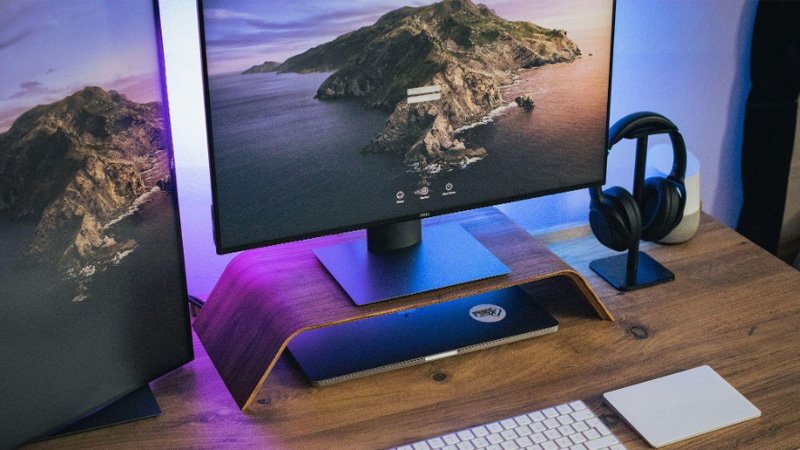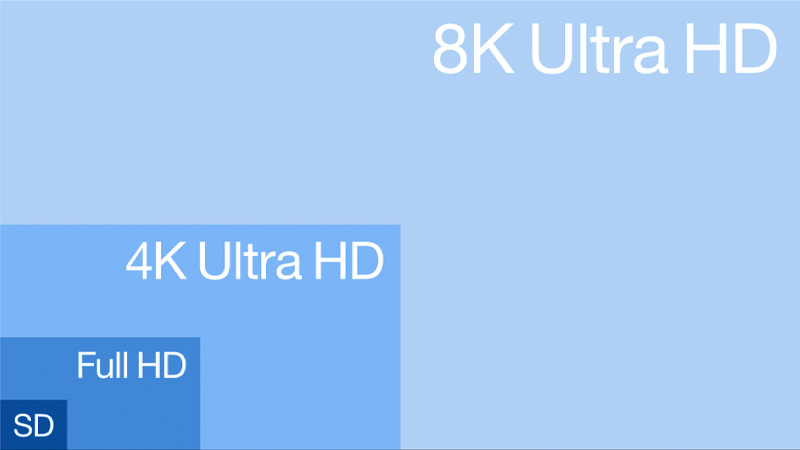We always see and hear the term 4K resolution, especially when discussing display technologies such as PC monitors and LED screens. What does the term mean, and why understanding the term may impact your viewing experience?
We will discuss the 4K resolution’s origins, meaning, and future. After the discussion, you will understand why the term matters to many consumers.
1. The Evolution of "4K Resolution"
“4K” refers to a display resolution in a particular monitor, screen, or display technology. A “display resolution,” in layman’s terms, refers to the clarity and precision shown in your display technology.
Technically speaking, it refers to the number of pixels shown on your screen. A pixel is the basic unit of imaging measurement in a particular monitor or screen, much like a dot.
The number of those units in a particular display technology will determine the clarity, detail precision, and overall resolution of a particular image or video. The more pixels you can pack on a screen, the more details you can show. The richer the texture, the more vibe, the more alive the image or video becomes. Better for the viewing experience.
As a rule, the higher the number of pixels, the greater the clarity of an image or video. The finer the details, the more precise the imaging.
When developing higher display resolutions, they deploy measurement terms to determine clarity. Thus, you have 360P, 720P, and 1080P, each improving the previous resolution. “P” stands for “progressive scan,” the way a particular display technology displays a particular content smoothly and seamlessly.
For many years, 1080P has been associated with outstanding clarity and high precision, so much so that it stands for “Full High Definition.” However, with the advent of 4K, there was a great leap concerning quality, precision, clarity, and overall viewing experience.

2. 4K and Ultra HD
Many companies advertise their UHD (Ultra High-Definition) display technologies as “4K,” meaning they have 4,000 horizontal pixels. They are nearly 4K but not 4,000 horizontal pixels, making the term a misnomer.
However, using “Ultra High Definition” for approximately 4K resolutions is apt. 4K is a vast improvement from 1080P and thus offers a lot, from aesthetic aspects to viewing experience.
Many companies and advertisers started using the term 4K for Ultra High Definition, and it stuck. Today, the two terms are virtually synonymous or used interchangeably.
A true 4K
Despite 4K and UHD becoming virtually synonymous, there is a true 4K resolution, which employs 4000 horizontal pixels and is used by some display technologies for their resolution.
Cinema and other media industries follow specific technological standards to improve the viewing experience or maintain the aesthetic appeal, clarity, precision, and excellent resolution of media content.
Nearly two decades ago, the Digital Cinema Initiatives set a specification system for digital formats, particularly for 2K and 4K resolutions. For a full frame (the standard film camera size of 35 mm), DCI established a 4096×2160 measurement higher than the 3840×2160 employed by the display technologies.
The Triumph of 4k UHD
The standard established by DCI is for cinema, that is, for theaters. Viewing films in cinemas, it makes sense to set the standard. It might have little impact on those watching in their homes and using various display technologies.
A higher display resolution needs an appropriate display technology suited to optimize what the display resolution can offer. Films shown in cinema are on wider screens, way bigger than most display technologies at home.
Having true 4K will make sense in cinema, but for those watching films on their display technology, the difference is negligible (try watching any media content at 720P and 1080P on your smartphone, and you will get the drift). Most viewers will not even notice any difference at all.
Of course, all display technologies will try to capture the cinematic experience and all its viewing pleasures. Still, most companies’ 4K UHD may be enough for this purpose.
But we are only talking here about cinema. You may not be watching films, but series on media platforms, sports and news on your cable television, documentaries, throwback television shows, and classic movies.
Most companies’ approximate 4K will suffice for all these purposes. For that reason, despite the standards set by DCI, many companies continue to manufacture UHD. With further innovation through 8K, they can bypass the true 4K and go for the latest, more immersive innovation.

3. Why do many go for 4K?
Simply put, a higher number of pixels means higher resolution. Display technology has been developing towards higher resolutions since the early days of cinema and television. This is because a higher resolution can enhance the viewing experience.
The development of 4K is just the latest innovation involving higher resolution development for enhanced viewing. However, with other technologies creating varied experiences for entertainment and other purposes, the development of 4K and higher versions and their use have become more imperative.
The development of display technologies, gadgets, and other apparatuses that can give you a more immersive experience makes the employment of 4K necessary. Many technologies and innovations are game changers, transforming your viewing experience and how you interact with the medium.
Aside from cinema and television, PC games and gaming consoles primarily benefited from the development of 4K. Not only does it enhance viewing pleasure, but it also provides a more immersive experience, whether you are watching or playing.
With the development of AI and other innovations, it becomes imperative that you get the latest of what is available. It is not only because it can give you a new experience and transform it, but it can also give you a glimpse of the future, of the limitless possibilities of what higher and higher resolutions can bring.
No wonder many companies began developing technology to deliver 4K resolution to their display technology. As years progressed, 4K display technologies abound and flooded the market. But of course, there are always differences in both quality and performance, depending on the brand and technology employed.

4. What does 4K offer?
A 4K resolution entails many advantages do not present in lower resolutions such as 1080P or 1440P and higher resolutions such as 8K. Among these are:
Aesthetic Pleasure
A higher resolution that can give you great clarity of images and a smooth, seamless display of contents could result in an enjoyable viewing experience. The remarkable precision in details and colors makes for pleasurable watching, especially if you are an aesthete concerned about the little intricacies of any media content.
Immersive Experience
The aesthetic pleasures enhance your viewing experience. The richer texture due to finer details, wonderful, elegant colors, great precision, and excellent clarity gives you a different feel from any other.
That is most obvious in display content that benefits the most from using 4K resolution: new films and games employing advanced technology. Watching them in 4K resolution creates a different vibe that transcends the common watching experience.
Watching in 4K is watching something more alive and vibrant. No wonder “immersive experience” usually follows any explanation or term concerning 4K and high definition.
Increasing Applicability
Many display technologies and medium content employ 1080P, but the use and application of 4K are increasing due to the advantages mentioned. More and more display technologies incorporate 4K, and more and more mediums, like cinemas and others showcasing sports events and concerts, use 4K resolution for enhanced viewing.
You need the appropriate technology, and more and more display technologies are adapting to 4K. Many consumers want a more enhanced and immersive viewing experience that 4K resolution can provide.
With an ever-increasing number of display technologies adapting 4K resolution, their prices have gone down. Over time, they have become more affordable than in previous years, allowing most people to buy them.
Though there is already a higher resolution, 8K, it is way more expensive than 4K and requires equally advanced technology to operate, which is also expensive. Also, most display contents are not suited for 8K viewing, limiting its applicability, at least for now.
That makes 4K ideal for aesthetic pleasure, immersive experience, and enhanced viewing pleasure. All things being equal, having a display technology with 4K resolution is like having the best of both worlds.
With prices likely to go down, more media content going 4 K, and lots of display technology sporting 4K resolution, 4K can offer all the things it can without any drawbacks, limitations, or problems.
If you want a display technology with 4K resolution, LEDSINO can offer you one. We have various display technologies sporting 4K that are of excellent quality, employ advanced technology at par with the best, and are durable and long-lasting. We can help you find one that suits your preferences.

5. Final Thoughts
4K resolution is a vast improvement from previous display resolutions, resulting in an enhanced, more immersive viewing experience. It transforms how we experience media content through various apps and display technologies.
It increasingly becomes the display resolution of choice for most consumers due to reduced prices, increased applicability without sacrificing, and even enhancing aesthetic appeal, all for a pleasurable watching experience. The use of 4K in display technologies will likely increase in the foreseeable future.



